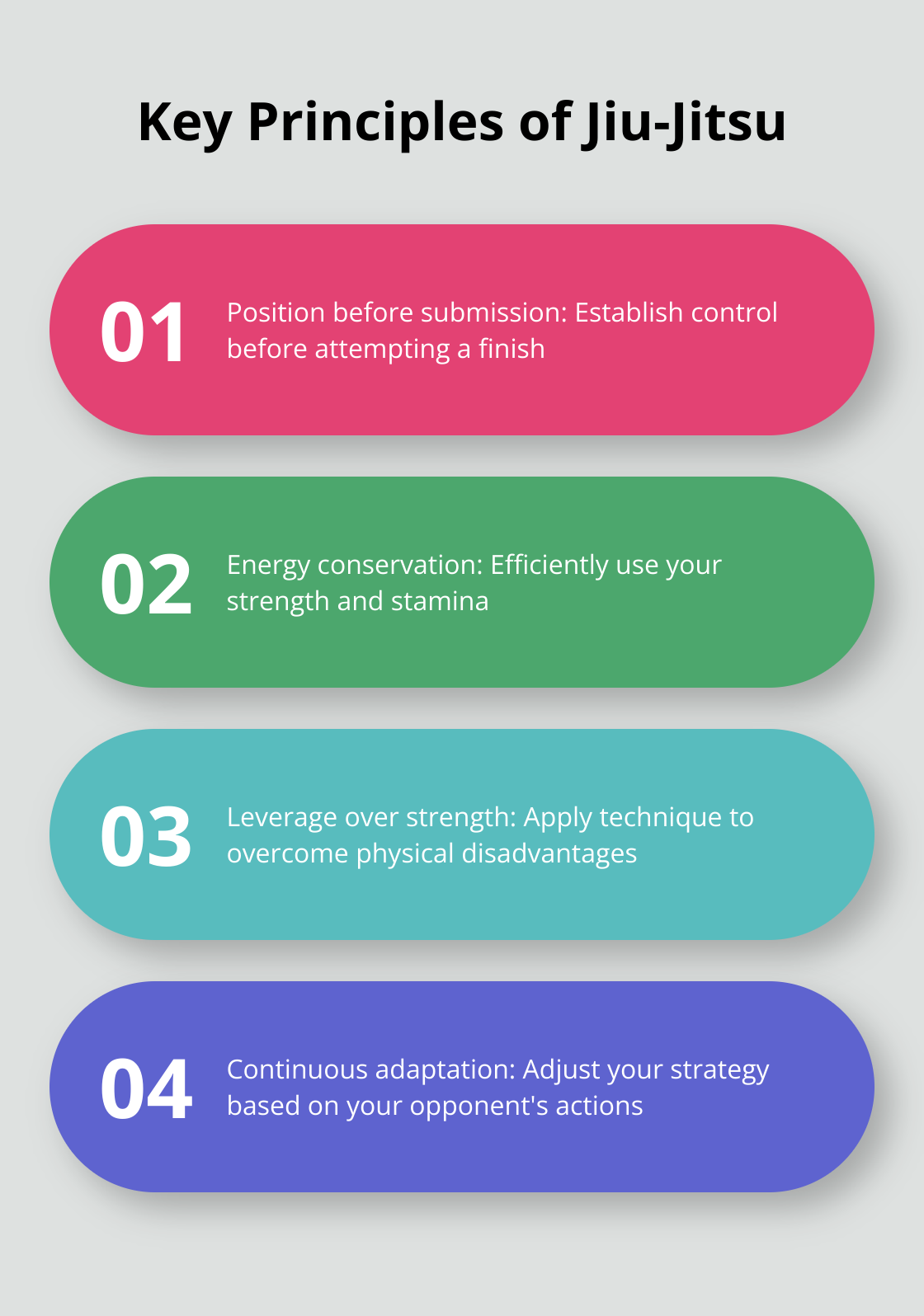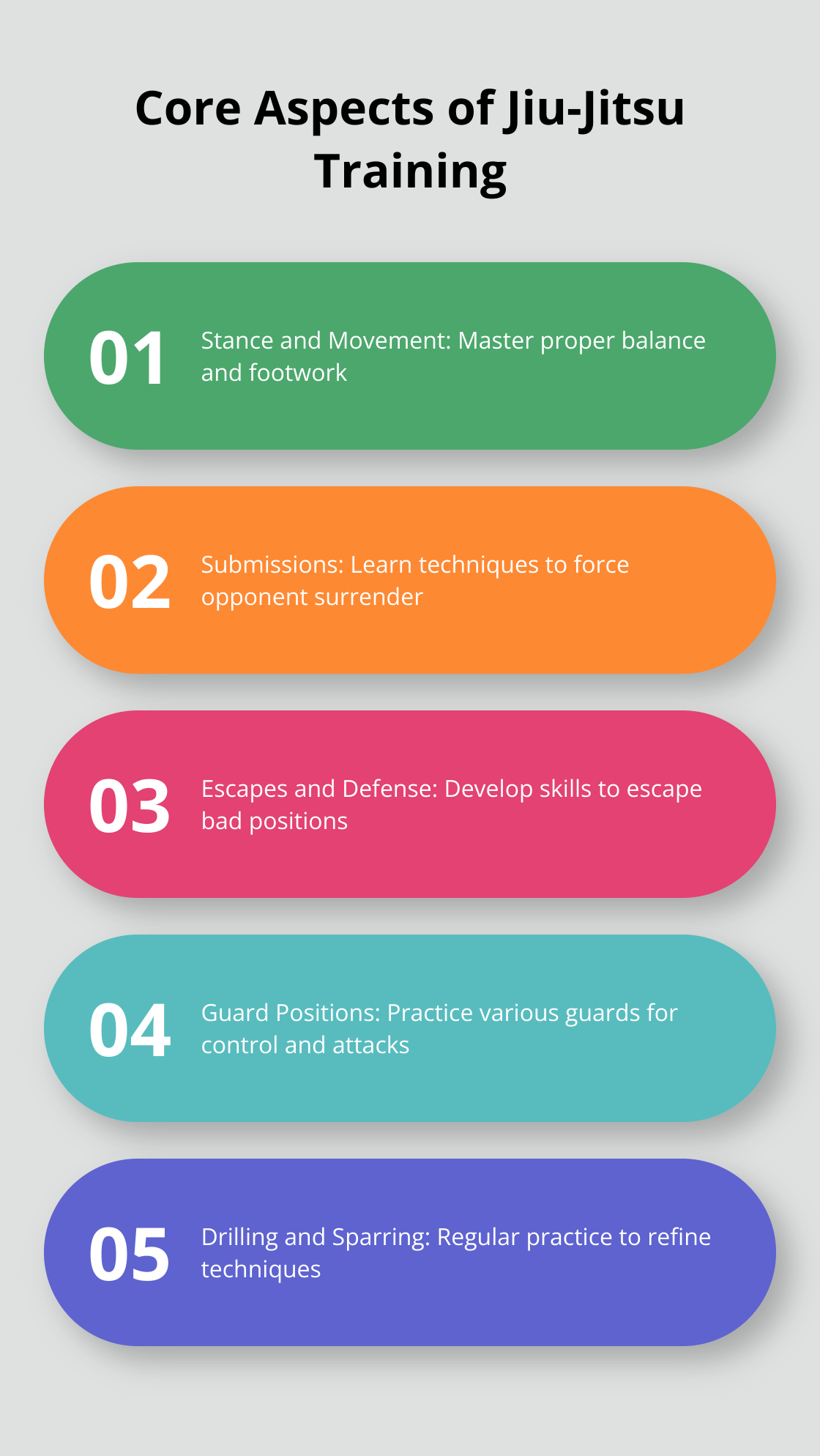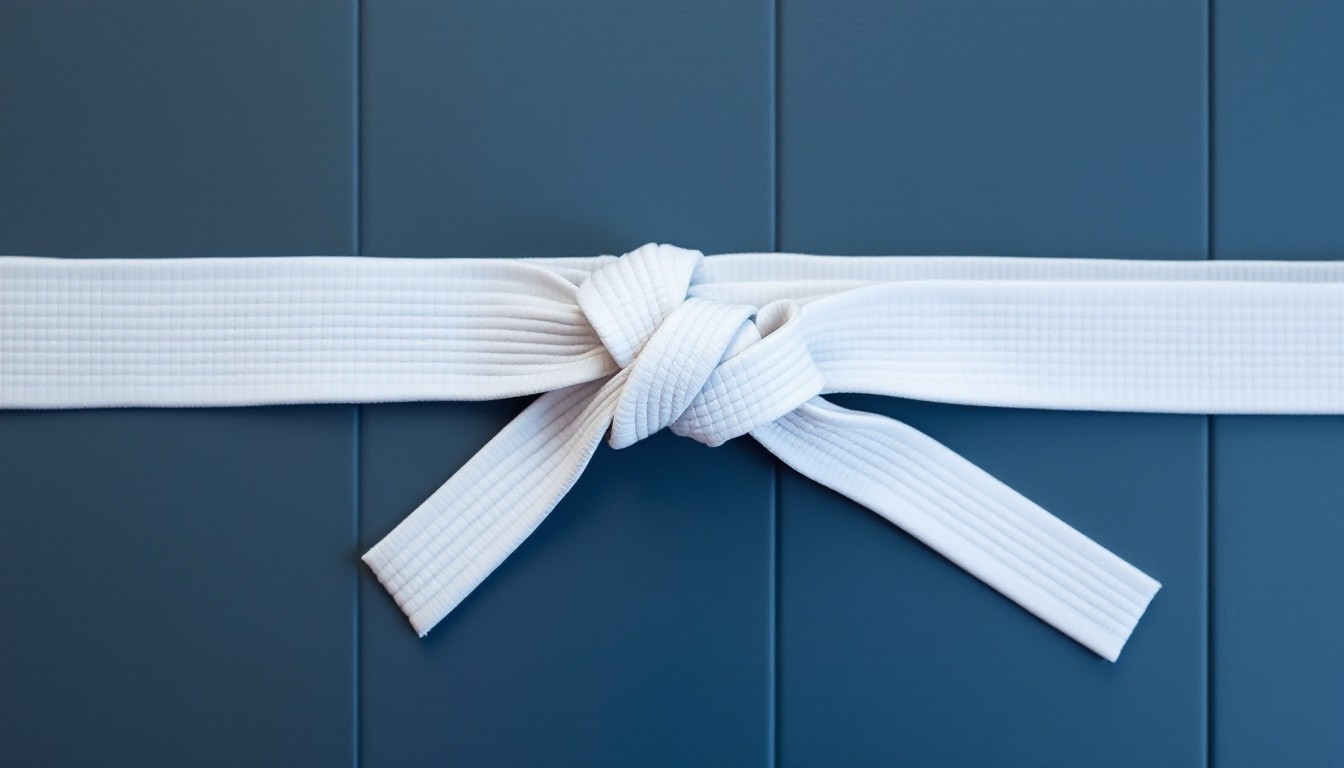At Jiu jitsu, we’re excited to guide you through the basics of this powerful martial art. Whether you’re wondering how to tie a jiu jitsu belt or eager to learn your first submission, this quick guide has you covered.
Jiu jitsu is more than just a sport; it’s a journey of self-improvement and physical mastery. Get ready to discover the essential gear, fundamental techniques, and core principles that will set you on the path to success in Brazilian Jiu-Jitsu.
What is Jiu-Jitsu?
Origins and Evolution
Jiu-Jitsu originated in feudal Japan, where samurai warriors developed it as an effective close combat method. In the early 20th century, Mitsuyo Maeda introduced Jiu-Jitsu to Brazil. The Gracie family then refined and popularized it, creating Brazilian Jiu-Jitsu (BJJ). They adapted the techniques for practical self-defense situations, which led to its worldwide popularity.
Core Principles and Philosophy
Jiu-Jitsu’s philosophy centers on efficiency and problem-solving. Practitioners learn to use an opponent’s energy against them, rather than rely on brute force. This approach makes Jiu-Jitsu effective for smaller individuals defending against larger attackers.
Key principles include:
- Position before submission
- Energy conservation
- Leverage over strength
- Continuous adaptation
These principles apply both on the mat and in everyday life, fostering mental resilience and strategic thinking.

Jiu-Jitsu vs. Other Martial Arts
Unlike striking-based martial arts (such as Karate or Taekwondo), Jiu-Jitsu emphasizes grappling and ground fighting. While arts like Judo focus on throws and takedowns, Jiu-Jitsu specializes in ground combat techniques.
A unique aspect of Jiu-Jitsu is its emphasis on live sparring or “rolling.” This practice allows practitioners to test their skills against resisting opponents regularly, providing practical experience that many traditional martial arts lack.
Training at Souza Grappling Co.
Souza Grappling Co. offers a comprehensive Jiu-Jitsu program that incorporates these principles and practices. Expert instructors guide students through the intricacies of the art, ensuring a solid foundation for beginners and continuous growth for advanced practitioners. The 3,000 sq. ft. facility provides ample space for training, and the flexible six-day schedule accommodates various lifestyles.
As we move forward, let’s explore the essential gear every beginner needs to start their Jiu-Jitsu journey.
What Gear Do You Need for Jiu-Jitsu?
The Gi: Your Jiu-Jitsu Uniform
The Gi stands as the cornerstone of Jiu-Jitsu equipment. This traditional uniform consists of a heavy cotton jacket, pants, and a belt. The Gi serves multiple purposes:
- It enables specific gripping techniques unique to Jiu-Jitsu.
- It helps regulate body temperature during intense training.
- It represents respect for the art and its traditions.
When selecting your first Gi, choose a lightweight, pearl weave fabric. This material offers durability and comfort. Ensure a proper fit – the sleeves should reach your wrists when you extend your arms, and the pants should sit just above your ankles.
Protective Gear for Safety
While Jiu-Jitsu promotes safety, some protective gear can prevent minor injuries:
- Mouthguard: This protects your teeth during accidental impacts.
- Rash guard: Wear this under the Gi to prevent skin irritation and mat burn.
- Athletic cup: Men should consider this for additional protection (optional but recommended).
Invest in quality gear from reputable brands. Cheap alternatives often wear out quickly and provide inadequate protection.
Hygiene Products: Clean and Healthy Practices
Proper hygiene plays a vital role in Jiu-Jitsu. Essential hygiene products include:
- Antibacterial soap: Use this immediately after training to prevent skin infections.
- Nail clippers: Keep your nails short to avoid scratching training partners.
- Athletic tape: Use this for wrapping fingers and toes to prevent injuries.
Bring a towel and flip-flops to use in the shower area. These items help maintain cleanliness and prevent the spread of foot fungus.

Your gear represents an investment in your Jiu-Jitsu journey. Quality equipment enhances your training experience and longevity in the sport. Many reputable schools (such as Souza Grappling Co.) offer guidance in selecting the right gear to ensure a safe and enjoyable learning experience.
Now that you understand the essential gear for Jiu-Jitsu, let’s explore the fundamental techniques every beginner should know to kickstart their training.
Mastering Basic Jiu-Jitsu Techniques

Stance and Movement
The foundation of Jiu-Jitsu lies in proper stance and movement. A good stance keeps you balanced and ready to react. Keep your feet shoulder-width apart, knees slightly bent, and your weight evenly distributed. This position allows for quick transitions and defenses.
When you move, maintain a low center of gravity. Slide your feet instead of stepping to stay stable and prevent opponents from easily sweeping you. Practice these movements regularly to make them second nature.
Submissions
Submissions force an opponent to surrender. The armbar, triangle choke, and rear naked choke are three fundamental submissions every beginner should learn.
The armbar targets the elbow joint, applying pressure to hyperextend the arm. To execute, control your opponent’s arm and use your hips to create leverage. The triangle choke uses your legs to attack and choke your opponent. It is the primary threat from the bottom when you’re in guard. The rear naked choke is applied from behind, using your arms to compress the carotid arteries.
These submissions require practice to perfect. Focus on proper form before applying force. Tap early and often when training to prevent injuries.
Escapes and Defense
Knowing how to escape bad positions is important in Jiu-Jitsu. The mount escape, for example, involves creating space, trapping your opponent’s leg, and using a bridging motion to reverse the position. When defending against submissions, focus on protecting your neck and keeping your elbows close to your body.
One key defensive principle is framing. Use your arms and legs to create distance between you and your opponent. This prevents them from applying pressure and gives you room to escape.
Guard Positions
Guard positions form a core part of Jiu-Jitsu strategy. The closed guard (wrapping your legs around your opponent’s waist) provides control and submission opportunities. The open guard (feet on your opponent’s hips or legs) offers more mobility and sweeping options.
Try to master transitions between different guard positions (such as butterfly guard and half guard). This versatility will enhance your offensive and defensive capabilities.
Drilling and Sparring
Regular drilling helps ingrain techniques into muscle memory. Start with slow, controlled movements and gradually increase speed and resistance. Sparring (or “rolling”) allows you to apply techniques against a resisting opponent. Begin with light, technical sparring to focus on proper execution rather than strength.
Final Thoughts
Mastering Jiu-Jitsu requires continuous learning and self-improvement. You’ll progress through the ranks with dedication and consistent training, even mastering simple tasks like how to tie a Jiu-Jitsu belt. Souza Grappling Co. provides a supportive environment for beginners to thrive, with expert instructors and flexible scheduling across six days.
Jiu-Jitsu offers more than physical benefits; it develops problem-solving skills and boosts confidence. You’ll join a vibrant community of like-minded individuals, whether your goal is self-defense, fitness, or competition. Every Jiu-Jitsu master started as a beginner, so embrace the challenges and celebrate small victories.
Your Jiu-Jitsu journey starts now. We at Souza Grappling Co. look forward to guiding you along the way. The path to becoming a skilled practitioner awaits, filled with opportunities for growth and achievement.




